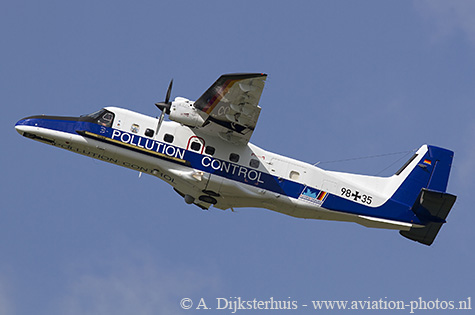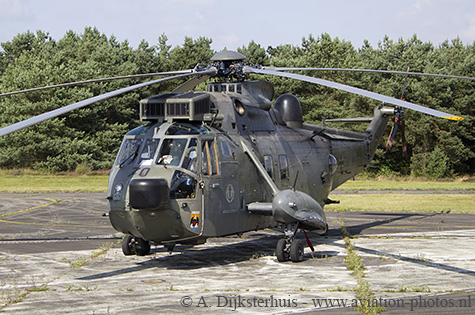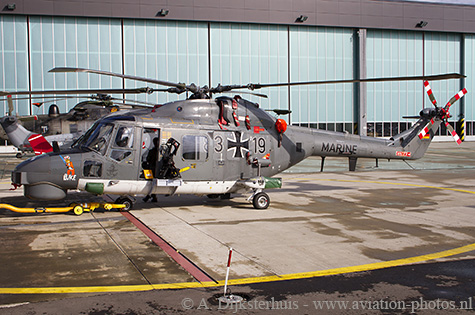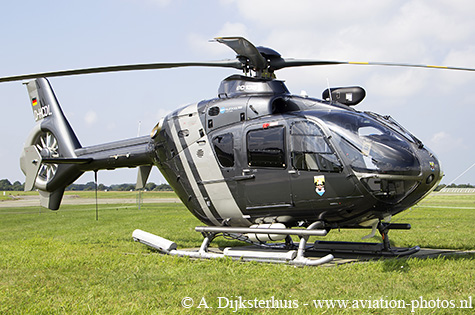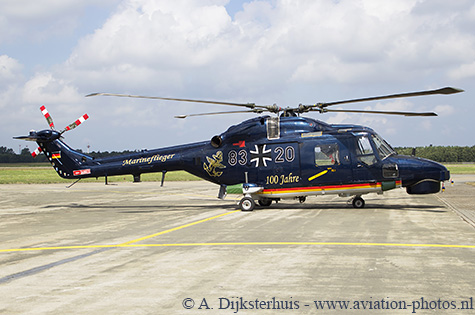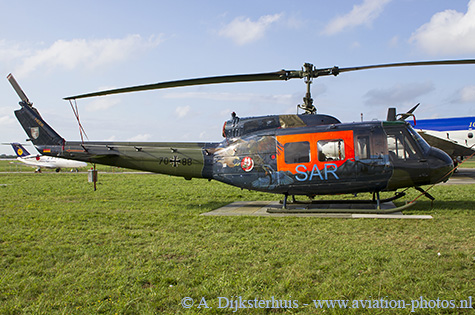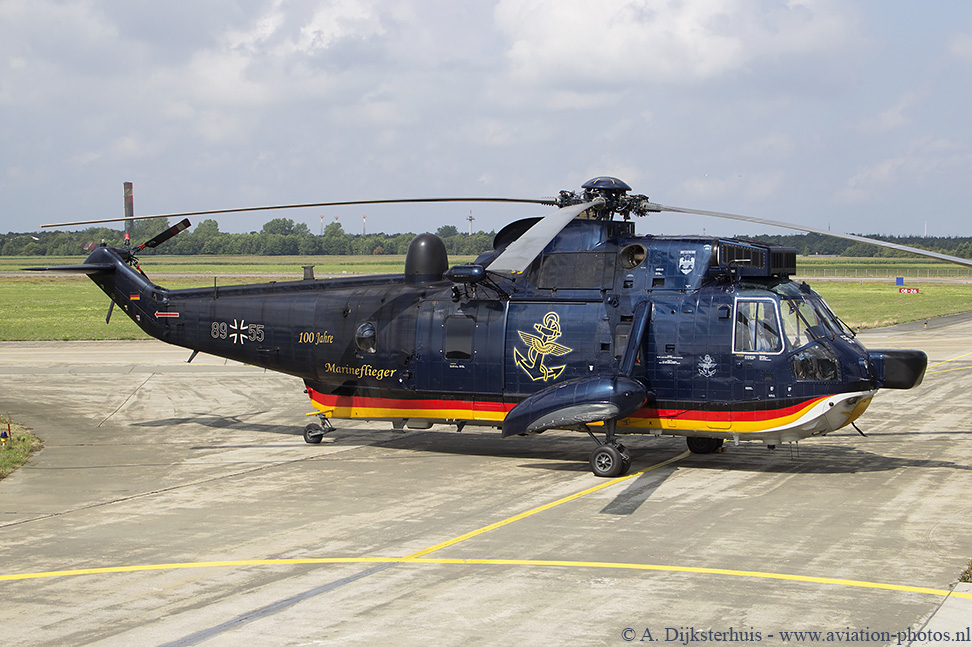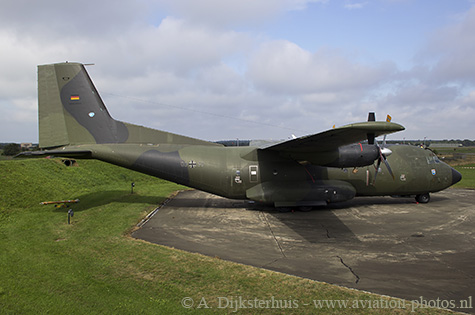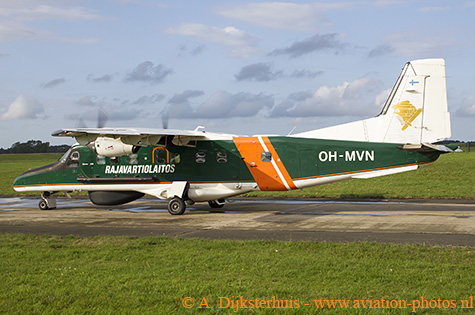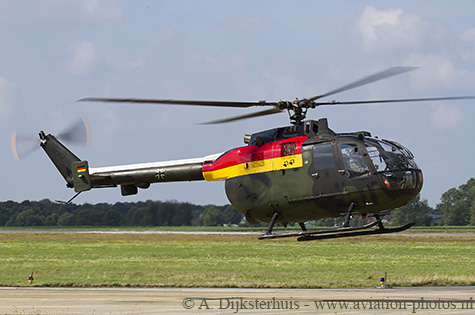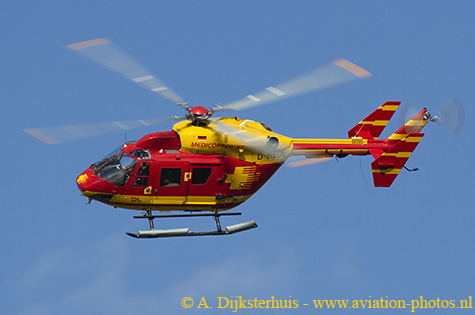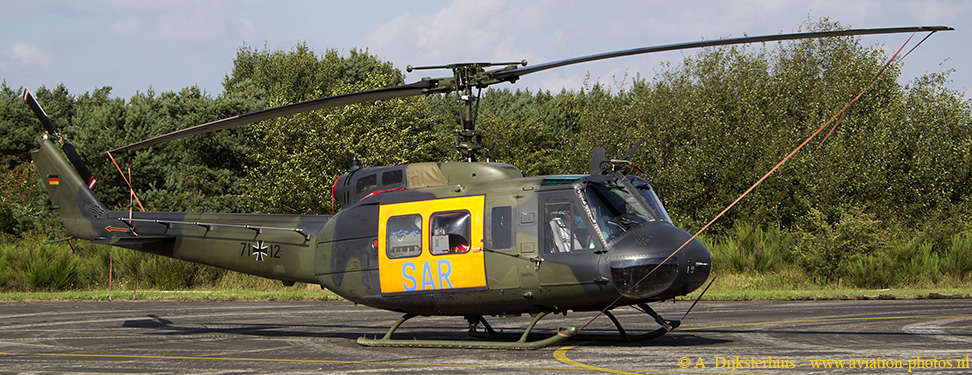It all began on the 3rd of May 1913 when Kaiser (Emperor) Wilhelm II founded the first two ‘Marinefliegerabteilungen’. One for the airplanes and another for the zeppelins. On Sunday the 18th of August, the German Marineflieger, celebrated their 100th anniversary with an Air Day at Naval Airbase Nordholz. Nordholz is one of the oldest airports in Germany and located in the north of Germany, about 25 kilometres north of Bremerhaven and close to the town of Nordholz. It is the homebase of the Marineflieger-kommando (Naval Air Command) with Marinefliegergeschwader 3 ‚Graf Zepplin’ (MFG3) and Marinefliegergeschwader 5 (MFG5). The P-3C Orion and the Dornier Do-228NG are operated by Marinefliegergeschwader 3.
The Sea Lynx Mk88A helicopters were transferred from Marinefliegergeschwader 3 to Marinefliegergeschwader 5, that already operated the other type of helicopter; the Sea King Mk41. The Sea Kings were moved to Nordholz in November 2012, as part of the scheduled closure of their, now former, homebase Kiel-Holtenau.
One of the highlights at a rainy Nordholz was a pair of Wildcat HMA2 helicopters. AgustaWestland had a booth inside one of the hangars to promote the AW159. One AW159, designated by the Royal Navy as a Wildcat HMA2, was parked inside. The second example was parked outside after a lot of requests and was probably the most photographed helicopter. The AW159/ Wildcat HMA2 can easily be recognized by the infra-red suppressed engine exhausts and the tail boom is far more angular than the original tail boom.
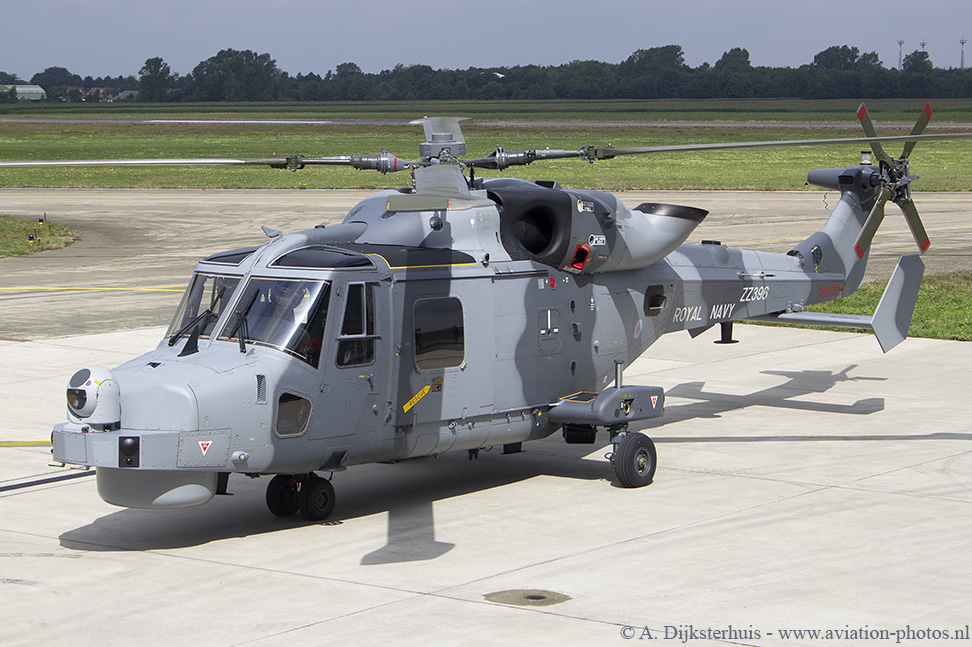
A civil EC135P2+ was seen with badges from MFG5 on both sides of the helicopter as well on the nose. This particular EC135 is in use for training purposes with MFG5. Special liveries were applied on both types of helicopter as well as the Orion. The Orion received a blue fuselage top with the text ‘100 Jahre Marineflieger’. Sea Lynx Mk88A with serial 83+20 and Sea King Mk41 with serial 89+55 both received the same dark blue livery. An UH-1D Huey and a German Bo-105P1 were present wearing a special livery.
This Air day even had a small aerial display with a few military helicopters displaying their capabilities. The Orion also flew a display. Formation flying was done with a Dornier Do-228 and the Dornier Do-28. Both aircraft flew a display afterwards. An Austrian Air Force Saab 105ÖE flew its display in a tiger-livery.
A few participants on static display reflected the history from the German Navy. A Dassault Atlantique 2 from the French Aeronavale was present, still wearing the special markings, celebrating 100 years Marine (1910-2010). The German Atlantic fleet was replaced by the Orions that were acquired from the Royal Netherlands Navy. One of the former German examples can be seen at the junction outside the gate of the airbase, with the special painted MFG 3 ‘Graf Zeppelin’ tail. The museum ‘Aeronauticum’ also has an example preserved. The entrance of the museum can be found close to the entrance of the air base.
A few civil aircraft on static display like the Dornier 27 and a Piaggio P.149 reflected the fixed wing part of the history within the German Navy. A Dornier Do-28 could be seen as part of the small flying display. A preserved Sikorsky H-34 was parked out of sight and was in a not so good condition. This particular helicopter was previously preserved at Kiel-Holtenau.
The polish Mi-14 helicopter was unfortunately cancelled a few days prior to the event. It would reflect the history as well; in late October 1979, the East German Navy (DDR-Volksmarine) received the first Mi-14 in two different versions. After the reunification in 1990, fourteen Mi-14s were added to the new inventory, but were quickly phased out in December 1991.
Pleasure flights were made during the day with an R.44 and a BK117. The BK117 was still painted as ‘Medicopter 117’. Medicopter 117 was a German spoken TV-serie with seven seasons that was broadcasted between 1998 and 2007 in several countries.


